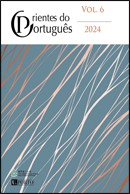Português no Índico
evidências de nativização do português moçambicano
Resumo
No contexto do crescente pluricentrismo do português, analisamos a nativização das variedades africanas, no enquadramento do “modelo dinâmico” elaborado por Schneider (2007) para as variedades nacionais do inglês, com incidência no português moçambicano (PM). São descritos os principais dados sociolinguísticos do PM, como a percentagem de falantes do português como L1/L2 e das línguas bantu locais, a projeção social do português em Moçambique e os fenómenos de diglossia e de “language shift” das línguas bantu para o português. Analisamos, em seguida, alguns dos principais indicadores linguísticos de nativização do PM: fonológicos, como a reestruturação silábica; sintáticos, como clíticos, marcação diferencial do objeto, transitivação, duplos objetos, emergência de novas construções, como a passiva dativa; e lexicais, como empréstimos e neologismos. Finalmente, discutimos as questões de contacto e graus de influência das línguas bantu, estádios de estabilização do PM, reestruturações da gramática do português europeu e (re)interpretação dinâmica e sociocognitiva da nativização do PM.
Downloads
Publicado
Edição
Secção
Licença
Direitos de Autor (c) 2024 Augusto Soares da Silva, Alice Mevis

Este trabalho encontra-se publicado com a Licença Internacional Creative Commons Atribuição 4.0.


